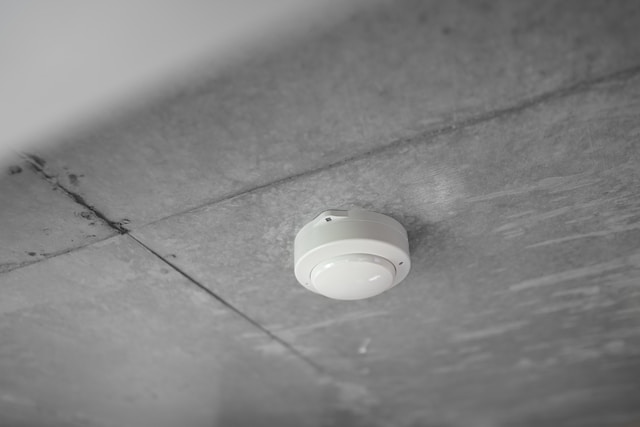In the bustling town of Tring, Hertfordshire, families go about their daily routines, secure in the comfort of their homes. However, the safety of our homes can sometimes be unexpectedly compromised, particularly by the threat of fires. That’s where smoke alarms come in. As the first line of defence against home fires, they play a crucial role in maintaining the safety of your residence. Let’s delve into why smoke alarms are so important, the different types available, and tips for proper installation and maintenance.
The Critical Role of Smoke Alarms
Smoke alarms are pivotal in providing early warning in the event of a fire, giving you and your family precious time to evacuate safely. According to the UK Fire Service, you’re twice as likely to die in a house fire if you don’t have a working smoke alarm. Fires can spread rapidly, and the presence of a functional smoke alarm can make the difference between a close call and a devastating tragedy.
Types of Smoke Alarms
There are several types of smoke alarms available, each with its strengths and suitable applications:
- Ionisation Alarms: These are particularly sensitive to small particles of smoke produced by fast flaming fires, like paper and wood, and will detect these fires before the smoke gets too thick.
- Optical Alarms: Also known as photoelectric alarms, these are more efficient at detecting larger particles of smoke produced by slow-burning fires, such as those caused by overheated electrical wiring.
- Heat Alarms: These alarms detect a rise in temperature from a fire and are insensitive to smoke. They can, therefore, be installed in kitchens where smoke or steam from cooking might otherwise trigger an alarm.
- Combined Alarms: As the name suggests, these alarms combine the features of more than one type of alarm, such as an optical and heat alarm, for multi-detection capabilities.
Installation Tips
The placement of smoke alarms is key to their effectiveness. Here are some tips to guide you:
- Install at least one smoke alarm on every level of your home, including the loft.
- Place alarms on the ceiling, as smoke rises.
- Avoid installing alarms near windows, doors, or vents where drafts could interfere with their operation.
- Fit alarms in living rooms and bedrooms, and in hallways and landings.
- Consider installing a heat alarm in your kitchen to avoid nuisance tripping from cooking fumes.
Maintenance Tips
Routine maintenance is crucial to ensure your smoke alarms are in good working order:
- Test your smoke alarms monthly to ensure they’re working. Most alarms have a test button for this purpose.
- Replace batteries once a year, or when the alarm signals a low battery. Some alarms come with 10-year batteries, in which case the whole unit will need replacing when the battery expires.
- Keep your alarms clean. Dust and debris can affect performance. You can use a vacuum cleaner to clean the vents.
Having a working smoke alarm installed in your Tring home is an absolute necessity. It’s your first line of defence against fires, providing you with early warning to safeguard you and your loved ones.
Remember, it’s not enough to just install smoke alarms; regular maintenance is just as important. And while the installation of smoke alarms can be a DIY job, if you’re unsure about anything, it’s always safer to hire a professional electrician.
Stay vigilant, stay safe, and let’s make our Tring homes a safer place together. If you have any queries or require professional help installing your smoke alarms, reach out to your domestic Tring electrician, RIGS Electrical for help.

Recent Comments